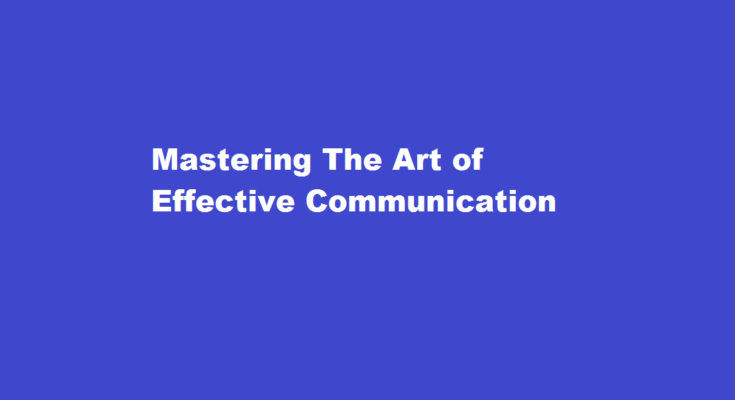Introduction
Effective communication is the cornerstone of building strong relationships, both personally and professionally. It is a skill that can be learned and honed over time, enabling us to convey our thoughts, feelings, and ideas with clarity and impact. In this article, we will explore some key principles and strategies to help you become a more effective communicator, fostering understanding, collaboration, and connection.
Active Listening
The first step towards effective communication is being an active listener. Active listening involves fully engaging with the speaker, paying attention to both verbal and non-verbal cues. Maintain eye contact, nod, and provide verbal affirmations to show your attentiveness. Avoid interrupting and resist the urge to formulate your response while the other person is still talking. Instead, focus on understanding their message, asking clarifying questions if necessary. By actively listening, you demonstrate respect and create an environment conducive to open and meaningful dialogue.
Clear and Concise Expression
To communicate effectively, it is crucial to express your thoughts and ideas clearly and concisely. Avoid using jargon or overly complex language that may confuse or alienate your audience. Organize your ideas logically, using simple and direct language. Consider the perspective of your listeners and tailor your communication style accordingly. Utilize visual aids, examples, and metaphors to enhance understanding. By conveying your message in a straightforward manner, you increase the likelihood of your audience grasping and retaining the information.
Non-Verbal Communication
Non-verbal cues play a significant role in effective communication. Pay attention to your body language, facial expressions, and tone of voice, as they can convey messages that complement or contradict your words. Maintain an open posture, face the person you are speaking with, and use appropriate gestures to reinforce your message. Be aware of your tone, ensuring it matches the intended meaning of your words. By aligning your non-verbal cues with your verbal communication, you enhance the clarity and impact of your message.
Empathy and Emotional Intelligence
Empathy and emotional intelligence are crucial elements of effective communication. Try to understand and acknowledge the emotions and perspectives of others. Show genuine interest and concern for their feelings and experiences. Practice empathy by putting yourself in their shoes and responding with kindness and compassion. Emotional intelligence involves recognizing and managing your own emotions, as well as understanding and influencing the emotions of others. By developing these skills, you create an environment of trust and mutual respect, fostering open and honest communication.
Feedback and Constructive Criticism
Providing feedback and constructive criticism is essential for effective communication in personal and professional relationships. When offering feedback, be specific and focus on behaviors or actions rather than personal attacks. Use “I” statements to express your perspective and avoid making assumptions. Be receptive to receiving feedback as well, maintaining an open mind and a willingness to learn and grow. By creating a culture of constructive feedback, you promote continuous improvement and strengthen your communication skills.
FREQUENTLY ASKED QUESTIONS
What are the six questions for effective communication?
Answering six questions – Why?, Who?, What?, How?, Where?, and When? – will help you create effective messages. Using tools like the message triangle and the communications plan will help you focus your thoughts and energy to get the most benefit from every communication.
What are the 7 C’s of successful communication?
Use the 7 Cs of Communication as a checklist for all of your communication. By doing this, you’ll stay clear, concise, concrete, correct, coherent, complete, and courteous.
Conclusion
Effective communication is a vital skill that can be developed through practice and conscious effort. By incorporating active listening, clear expression, non-verbal communication, empathy, and feedback into your communication style, you can enhance your relationships and achieve greater understanding and collaboration.
Read Also : Mastering The Art of Commenting in HTML



